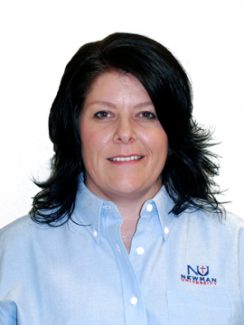When Director of the Newman University Western Kansas Center Jessica Bird took a district leadership class, little did she know that it would kick-start a brand new program to enhance the experience between school districts needing more teachers and Newman education students.
Education majors have for decades followed the traditional way of learning — take the required courses, then head into a classroom with an already established teacher for their student teaching internship. The issue with this traditional method, however, is the student leaves after the semester is over, and must relocate to new a new school and new students to start their teaching careers.
“I started co-working on this project, and came up with a plan,” said Bird. “It was a lot of work, but it’s a great program for the student teachers and the children they’re teaching.”

The solution Bird created is called the Advanced Student Teaching Model.
“Basically, if there is an open position in the district, [district officials] pay students a stipend to come in and student teach,” Bird explained. “Then the district would bring a retired teacher, or one who’s been at home for an extended absence, to come in and be the cooperating teacher.”
After the semester ends, the student teachers take over the classroom, remaining with the children they’ve been teaching for the semester and filling a vacancy for the district.
Bird said the teaching shortage forced a new method of thinking and doing in order to attract and keep teachers in the area. She said class sizes are going up and there were many classes relying on long-term substitute teachers.
“For a long-term solution, subs aren’t ideal,” she said.
So far, four school districts are utilizing the Advanced Student Teaching Model — USD 457 Garden City, Kan., USD 480 Liberal, Kan., USD 507 Santana, Kan., and USD 226 Meade, Kan. From a total of 15 student teachers, 10 are participating in the new method.
“In Garden City, we are a month into the school year. Everything seems to be going very well,” said Bird.
USD 457 Coordinator of Public Information Roy Cessna said, “The program gives us that pool of teachers that once they’re done, we’ve got that incentive that guarantees us that they’ll be working in the district after they receive their license.”
As for evaluation, that process has also been worked out in detail. Bird said they are using a new tool to evaluate and observe the student teachers. Using a software called eWalk, data is collected electronically.
“Every time someone does a walk-through, they enter the results into the program,” said Bird.
Bird explained that walk-throughs are performed by school officials as part of the monitoring process, and take place a minimum of 14 times during the semester as opposed to only six times with the traditional method of student teaching because “they are going to stay in that classroom, and so we want the process to be highly involved.”
“We’re going into the district, training everybody to collect data,” Bird added. “We want to compare the data between traditional and non-traditional student teaching to see if the new model is working efficiently and better than the traditional model.”
USD 457 Superintendent Deputy Heath Hogan said, “We’re trying to do some innovative things to combat the teacher shortage we are facing here in Kansas. At this point, the partnership with Newman, it’s great. We’ve had a long standing relationship with the university, and positive interactions with the students and the people that we hire. Hopefully this is a way for us to attract more students to our district.”

